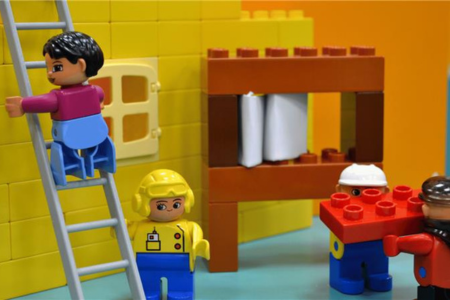Creating standardized engineering data, mainly the part descriptions might seem like a straightforward task, but it comes with its own set of challenges. Here’s what I think are some of the difficulties:
Diverse Terminology: Different industries and sometimes different companies from the same industry might have their own unique terminology for parts. Getting everyone to agree on a single set of terms can be like herding cats. Anyone with experience in engineering or a pet cat knows that, having two is one too many.
Legacy Systems: Many industries have been around for a while, and they might already have existing systems and descriptions in place. Transitioning from those old ways to a new, standardized system can be quite a task. Most industries with well-defined specifications rarely move to a newer system. Often, you must push them out the door by the scruff of their imaginary neck with unavoidable reasons like the end-of-life of the tool they are using.
Technical Details: Parts can be incredibly intricate. Describing them in a way that captures all their critical details while also being concise and understandable is like walking a tightrope. Making the description too short doesn’t make complete sense and making it too long strays away from the definition of description. Most tools also have limits on what you can have.
Changing Technology: With technology evolving rapidly, new parts and materials are being introduced all the time. Creating standardized descriptions that can accommodate these changes without constant updates can be a challenge. It’s a simple difference between a millennial and a Gen-Z, with the 1990s being the cusp of change. You don’t have to worry about someone calling your landline until a download is completed. Keeping up with today’s technology has become much more difficult than dealing with a teenager.
Global Context: Different countries have different standards and preferences. Finding common ground that works for engineers across the globe is already difficult. Having descriptions that everyone agrees upon is going to be an uphill battle.
Resistance to Change: People are creatures of habit. Convincing industries and professionals to adopt a new way of doing things can be met with resistance, especially if they’re used to their own methods. This characteristic, when added to the legacy systems as discussed above, becomes a major contributor against having a standardized specification.
Balancing Detail: Too much detail can be overwhelming, while too little can lead to misunderstandings. Striking the right balance is like Goldilocks finding the perfect porridge and we’re the confused bears.
Legal and Intellectual Property Concerns: Some companies might be protective of their proprietary part names and descriptions. Standardizing might require navigating legal and IP hurdles.
Ongoing Maintenance: Standards need to be maintained over time to keep up with changes in technology, industry practices, and global requirements. It’s like trying to keep a garden looking great year after year. And remember what we talked about technology. So many changes to cover, but so little time.
Despite these challenges, creating standardized descriptions is worth the effort because it ultimately leads to smoother collaboration, clearer communication, and a more efficient engineering ecosystem. It’s a bit like solving a puzzle – difficult, but immensely rewarding in the long run.
The real question is: are you planning short-term or long-term?

Karthik S is our in-house Master Data Quality Manager certified by ISO-8000 for Data Quality and Enterprise Master Data. He comes with 10+ years of experience with prior experience in handling customer, asset & engineering data, improving data quality & accessibility, eliminating data loss and standardizing data to match industry standards.




